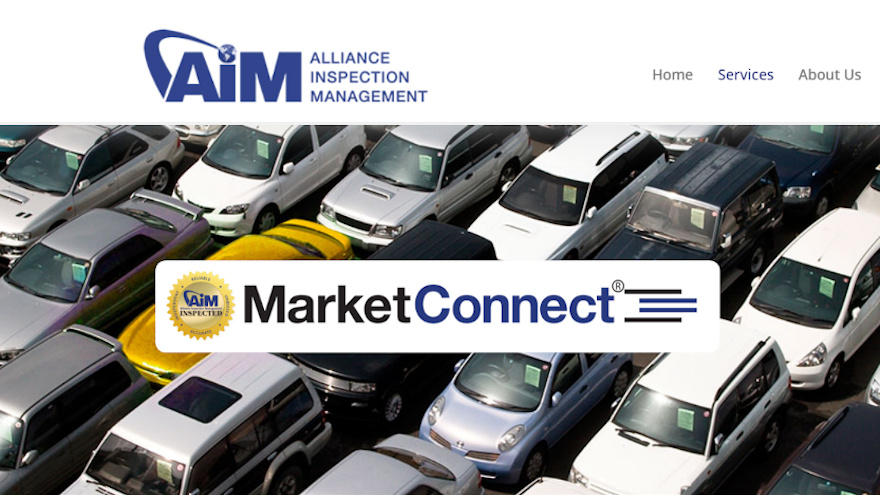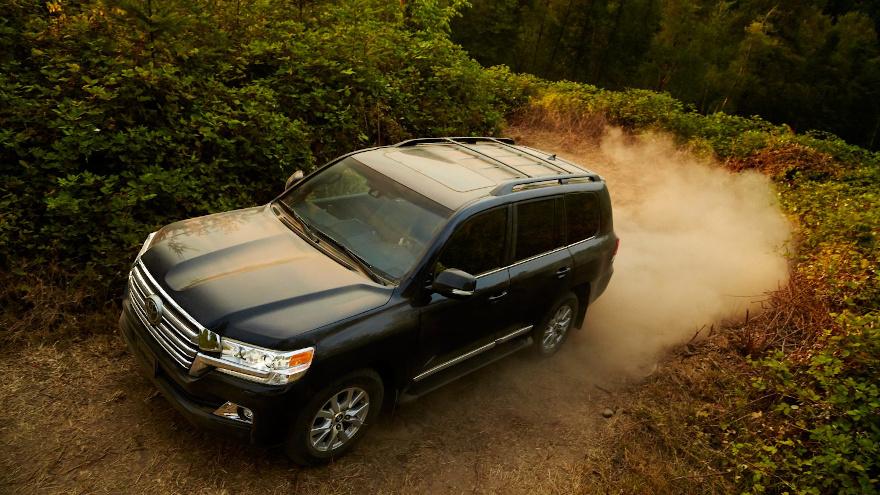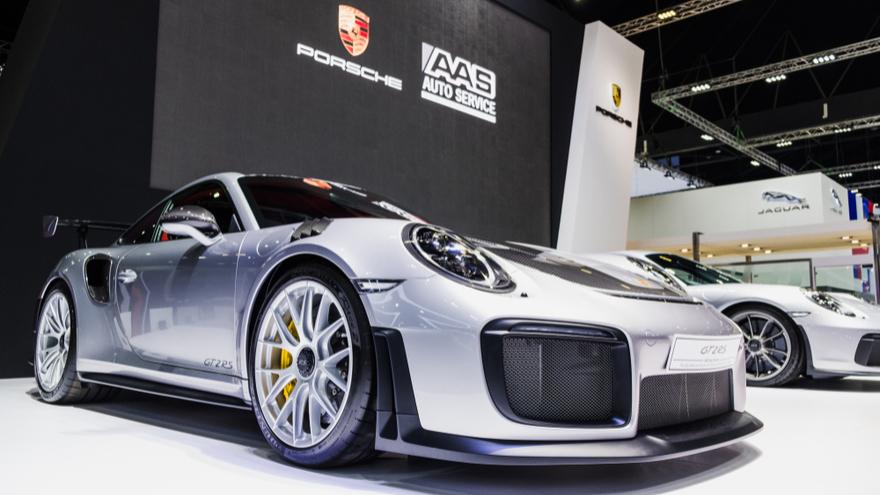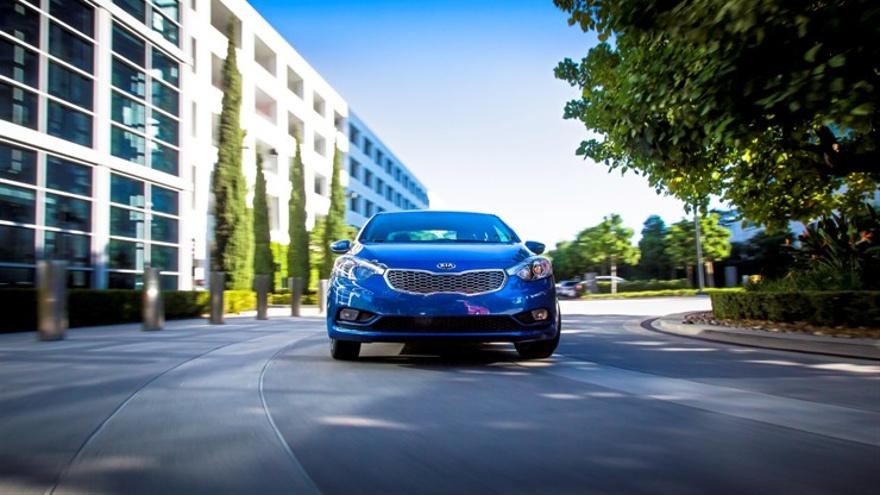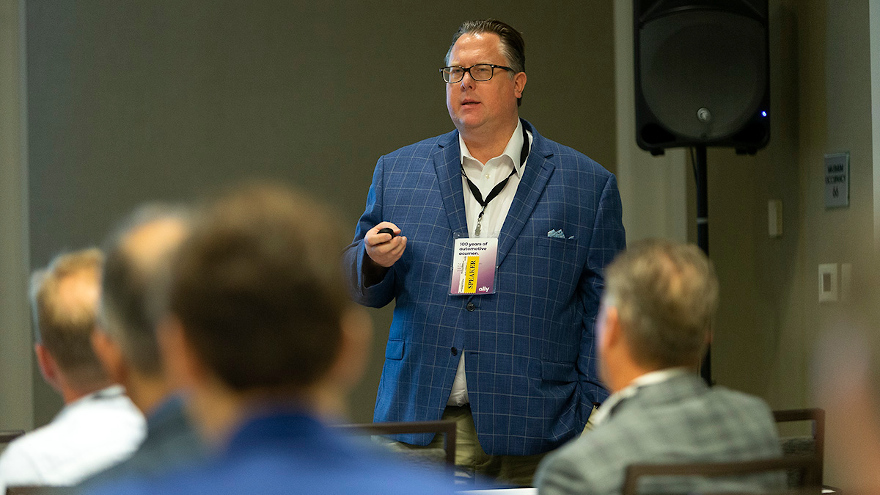Alliance Inspection Management, or AiM, was founded in 2005, with a goal to “inspect the condition of new and used vehicles from bumper to bumper.”
On Wednesday, the company announced it has reached a new milestone: It has sold the 600,000th vehicle through its AiM MarketConnect process.
The company describes that process as a patented, web-based multi-platform software product for dealers, OEMs, fleet lease, rental and captive finance consignors.
AiM MarketConnect helps increase the efficiency of vehicle wholesaling efforts, the company said, noting that the product streamlines the wholesale selling and buying process.
It does that by increasing the number of bids by 2.5 times, according to the company. It also streamlines the wholesale selling and buying process by selling vehicles twice as quickly, at 1.3 days versus 2.8 days previously.
Also with the product, a consignor can post to major marketplaces and use real-time transaction feeds managing the sales process. That also helps eliminate the potential for double sales, AiM said.
AiM co-founder and senior vice president of sales and marketing Eric Widmer said users of AiM MarketConnect are selling cars more efficiently.
“Our data shows that it benefits all the participating marketplaces too, as they are all competing at the highest levels to increase the number of units that are sold through their marketplaces,” Widmer said in a news release.
He continued, “This is a win-win, as our customers can distribute their inventory across multiple marketplaces more efficiently, which drives additional transaction opportunities for all of their wholesale units.”
According to a new study measuring the usefulness of U.S. automotive third-party websites during the process of shopping for a new or used vehicle, Autotrader and Kelley Blue Book rank highest in a tie in the desktop segment, with a score of 790 out of 1,000.
But according to the J.D. Power 2020 Automotive Website Evaluation Study released on Thursday, a gap of only nine points on a 1,000-point scale separates the top six websites on desktop.
Carfax, at 829 on a 1,000-point scale, is the highest-ranked site in the smartphone segment.
J.D. Power examined four key measures, in order of importance: information/content; appearance; navigation; and speed.
Smartphone satisfaction continues to outpace desktop satisfaction. The study shows overall satisfaction averaging 773 for desktop. The smartphone averages 795.
J.D. Power senior manager of digital solutions Jon Sundberg said J.D. Power redesigned this year’s study to analyze various recent trends seen in automotive third-party websites.
“New digital functionality has been implemented by many third-party websites, such as personalization and digital retailing, which enhance the shopping experience for the consumer, and we want to ensure the shopper’s voice is included in these areas,” Sundberg said in a news release.
J.D. Power initially released the Automotive Website Evaluation Study in 2013. The company fielded this year’s study in January.
It is based on responses from 4,236 vehicle shoppers, on desktop and smartphone, who indicate they will be in the market for a new or used vehicle within the next 24 months.
J.D. Power disclosed that its own consumer automotive websites compete with the websites in the Automotive Website Evaluation Study, but they are not included in the study.
Overall customer index satisfaction index ranking
(Based on a 1,000-point scale)
Desktop website
| Autotrader |
790 |
| Kelley Blue Book |
790 |
| Cars.com |
784 |
| CarGurus |
781 |
| Edmonds |
781 |
| TrueCar |
781 |
| Carfax |
774 |
| Segment average |
773 |
| Autoblog |
743 |
| Car and Driver |
737 |
Smartphone website
| Carfax |
829 |
| TrueCar |
808 |
| CarGurus |
806 |
| Edmunds |
805 |
| Cars.com |
801 |
| Autotrader |
796 |
| Segment average |
795 |
| Kelley Blue Book |
791 |
| Autoblog |
761 |
| Car and Driver |
756 |
SOURCE: Charts from J.D. Power/J.D. Power 2020 Automotive Website Evaluation Study,
How do you update the Toyota navigation system for free?
How much does a Mini Cooper weigh?
Those are among some of the most Googled questions by manufacturer, according to Click4reg.co.uk.
Click4reg is a custom license plate supplier that analyzed data from search volume tracker Ahrefs.com in showing which questions Google users asked the most about different vehicle brands.
The company says that about 2,100 Americans each month use Google to ask how to update the Toyota navigation system for free.
According to Click4reg, the most common technical questions on Google from U.S. car owners are on the topic of what various dashboard lights mean and how they can be reset.
Overall, Americans are most interested in where certain car brands are from.
Another top question by brand is “What does BMW stand for?” About 12,000 Google searchers ask that question each month.
About 5,000 searchers per month ask, “Who makes the Mini Cooper?”
Many Americans seem to have issues with Ford’s antitheft system. About 700 searches a month ask “How to disable Ford antitheft system?” And about 600 people each month search ‘How to reset antitheft system Ford?” About 500 people per month ask “How to use Ford sync?”
And by the way, according to Click4reg, the bad news for Googlers wanting information on updating the Toyota navigation system for free is that it costs at least $130 to get a three-year Toyota navigation system update. Also, “BMW” stands for Bavarian Motor Works.
Also, people want to know who owns the various vehicle manufacturers. Other top searches, along with the approximate number of searches each month, include:
—Who owns Volvo? (6,100)
—Who makes the Mini Cooper? (5,000)
—Who owns BMW? (2,600)
—Who owns Ford? (1,900)
Connected technology. Consumers continue incorporating it into their everyday lives.
As that trend continues, established and new automobile manufacturers and dealers should take note and “provide their customers with the facilities, features and connectivity they have become accustomed to," said Metova president and chief marketing officer Jonathan Sasse.
“The connected car is no longer a futuristic luxury, but rather a real expectation and often a deciding factor among new car buyers," said Sasse, in a news release.
His company, Metova, helps businesses lead their markets and increase customer loyalty through the use of emerging mobile, web, connected home and connected car technologies.
According to the second annual survey from Metova, for consumer participants of the survey, “technology/infotainment” now ranks higher than “power, “interior design” and “seating and storage capacity” as consumers’ deciding factor in their auto purchase. Technology/infotainment is also equal to “exterior design” and “ratings and reviews.”
Also, the survey shows that when prospective new-vehicle buyers are considering their purchase, only “gas mileage,” “reliability,” and “price” are more important than “technology/infotainment.”
Another finding: Almost one out of five new-car buyers said that if the vehicle did not include the expected technology — even if it had everything else they wanted, such as price, brand, design, and fuel economy — they would walk away from the purchase.
The survey also showed a high value for bundled connected vehicle services. Two out of three respondents said that they would switch to a comparable service provider, such as music, from one they currently use simply to experience the convenience of being included in their vehicle by default.
For almost a third of car owners, their vehicle can connect directly to the Internet without the use of their mobile phone.
Almost 86% value technology as part of the new-car purchase.
When vehicle owners opt for branded audio systems, the cost is worth the value it brings to those owners and the manufacturers. That is according to Brent Gruber, who is the senior director of the automotive quality practice at J.D. Power.
“Specifically, when consumers are happy with their branded audio system experience, it ultimately moves the needle on overall satisfaction of the vehicle experience,” Gruber said in a news release.
According to the J.D. Power 2019 Multimedia Quality and Satisfaction Study, branded audio is having a positive impact on how satisfied owners are with in-car multimedia technology and how satisfied they are with the vehicle.
The study also showed that manufacturers of the technology are doing well in keeping the number of reported problems down. For the fourth year in a row, the overall number of problems reported with audio, communication, entertainment and navigation technologies — or ACEN technologies — has also decreased.
Although the branded audio system option is readily available in premium vehicles, manufacturers of non-premium vehicles should also think about offering the upgrade more often, Gruber said. That, he said, could increase owner satisfaction and add the benefit of increased sales.
The study ranked how the vehicle manufacturers are doing in the area of branded audio system performance. Top-performing vehicles by segment are:
— Small: Hyundai Accent
— Compact: Kia Soul
— Midsize: Hyundai Santa Fe
— Large: Nissan Titan
— Small Premium: Mercedes-Benz GLA
— Compact Premium: Genesis G70
— Midsize Premium: Audi Q8 and Porsche 911 (tied)
— Large Premium: BMW 7 Series
The study analyzes vehicle owner experiences with the quality, design, and features of their automotive sound system, including hands-free features.
J.D. Power says that by focusing on “things gone wrong” and design satisfaction “things gone right,” with audio/multimedia system quality, the study serves as a strong tool for developing and marketing new and existing audio/multimedia systems.
The study also provides competitive analysis and multimedia supplier sourcing information for every model sold in the United States. J.D. Power says that information is a strong benchmarking tool that allows manufacturers and suppliers to identify strengths and weaknesses.
The study measures vehicle owners’ opinions and experiences in the first 90 days of ownership in the areas of quality, design and features of their ACEN system. The study determines multimedia system quality by the number of problems experienced per 100 vehicles, or PP100. A lower score reflects higher quality.
J.D. Power says the availability of hands-free communication technologies is “rapidly becoming ubiquitous.”
More vehicle owners are bringing compatible multimedia devices into their vehicles, but many states don’t allow use of handheld devices in vehicles without a handsfree system, J.D. Power said.
“As hands-free technologies and capabilities are introduced into a larger number of models, quality problems with this functionality are more frequently being reported by vehicle owners and thus are becoming a top priority for manufacturers and suppliers,” J.D. Power said.
Kristin Kolodge says alerts from vehicle technology such as lane-keeping and centering systems should not come across as a “nagging parent.”
“No one wants to be constantly told they aren’t driving correctly,” said Kolodge, who is executive director of driver interaction and human machine interface research at J.D. Power. “Automakers are spending lots of money on advanced technology development, but the constant alerts can confuse and frustrate drivers.”
According to the J.D. Power 2019 U.S. Tech Experience Index Study released on Tuesday, alerts from some advanced driver assistance systems annoy drivers so much that many of the drivers disable the systems. Some might try to avoid buying vehicles in the future that feature the systems, according to the study.
For automakers that have worked to market those “lucrative technologies” and hoped to see more highly automated vehicles in the future, that is a major concern, J.D. Power said.
This is the fourth year of the study, which measures owners’ experiences, use and interaction with 38 driver-centric vehicle technologies at 90 days of ownership. The study analyzed the following major technology categories: entertainment and connectivity; collision protection; comfort and convenience; driving assistance; smartphone mirroring; and navigation.
Collision protection scored highest at 813 among the six categories that the study measured. Second was smartphone mirroring at 789, and next were comfort and convenience (787); entertainment and connectivity (782); driving assistance (768); and navigation (744).
The study also honored some vehicle brands that Kolodge says “are succeeding at making their safety technology effective without being overbearing.” The Kia Stinger is the best-performing vehicle in the study, scoring 834 on a 1,000-point scale.
In addition to the Stinger winning in the compact luxury segment, the Hyundai Kona and Toyota C-HR tied with the highest score in the small segment. In the compact segment, the Kia Forte took top honors. The Chevrolet Blazer won in the midsize segment, Porsche Cayenne in the midsize luxury segment, and Ford Expedition in the large segment.
It was the second consecutive year that the Expedition, Kona and Stinger received segment awards.
Another key finding of the study is that 69% of respondents have Apple CarPlay, Android Auto, or both in their vehicles. J.D. Power said that is beginning to have a negative impact on future sales of the automakers’ factory-installed navigation systems.
Sixty-eight percent of owners with Apple CarPlay, Android Auto or both would like to have factory-installed navigation on their next vehicle. That compares to 72% of respondents who do not have Apple CarPlay or Android Auto.
“This is a significant future profit loss for the automakers,” J.D. Power said.
The study also finds that built-in apps are not meeting users’ expectations. The lowest-performing attribute in the entertainment and connectivity category, with 7.63 on a 10-point scale, is “ease of using built-in apps.”
Twenty-nine percent of owners have discontinued the use of built-in apps, according to J.D. Power, and 46% of those respondents say they “do not need it.” Eighteen percent say they “have another device that performs the function better.”
“Apps on external devices are a competitive threat, so it’s imperative for automakers to ensure intuitiveness and ease of use,” J.D. Power said.
The study also found that if an owner is satisfied with his or her vehicle technology experience, that strongly increases the chance that he or she will recommend or repurchase the brand.
When overall satisfaction scores higher than 900, 75% “definitely will” repurchase the same make again and 95% “definitely will” recommend it, according to the study.
“Automakers looking to drive loyalty need to provide a highly satisfying tech usage experience,” J.D. Power said.
For auto manufacturers, insurance carriers, telecommunications companies and consumer electronic companies, the study provides clarity on how to minimize the gap between driver experience and technology feature execution, J.D. Power said.
“Consumers are still very concerned about cars being able to drive themselves, and they want more information about these complex systems, as well as more channels to learn how to use them or how and why they kick in,” Kolodge said.
“If they can’t be sold on lane-keeping — a core technology of self-driving — are they going to accept fully automated vehicles? Dealers remain a partner in the process of helping translate to consumers what these technologies bring to the table, but consumers still need that element of trust that systems are going to kick in when they’re supposed to," she continued.
"It’s essential that the industry recognize the importance of an owner’s first experience with these lower-level automated technologies because this will help determine the future of adoption of fully automated vehicles," Kolodge went on to say.
Manheim says it is ramping up its investment in Simulcast and plans to add a host of new features to the digital auction platform later this year and early next.
The company declined to provide a specific breakdown of the investment but did note that it is part of the 2-year, $100 million overall digital investment that Manheim began in 2018.
As for a timeline, Manheim is currently testing the new features with a group of dealers and plans a more extensive rollout later in the year, the company said.
“The new Simulcast updates further evolve a technology that has transformed the remarketing industry by bringing the auction to the dealer,” Manheim president Grace Huang said in a news release.
“These new features give dealers real-time access to even more vehicle details and images, so they can make faster, smarter bidding decisions,” she said.
“They’re also part of a bigger commitment by Manheim to invest in ways to improve the auction experience for dealers, creating a safer way to buy while helping them more effectively run their businesses.”
The upgrades to Manheim Simulcast, a platform launched in 2002, are below, as listed in Manheim’s news release:
- One platform that makes it easier for dealers to view the bidding/buying experience
- Odometers and auction lights, indicating any special conditions of the sale, that are now visible for vehicles on the run list
- Photo tabs that provide more visuals, larger images and multiple views, allowing dealers to see the vehicles from different angles without being onsite
- A responsive bid window that dealers can enlarge or compress based on their monitor size to make it easier to see all relevant information
- The ability to scroll forward or backward through the run list to preview vehicles before they’re on the auction block and follow the vehicle status after it leaves the block to potentially submit a bid on any unsold vehicles
- Visible proxy bid amounts to remind dealers that they have already placed a bid
Through July, there have been approximately 1.3 million cars sold to Manheim digital buyers so far this year, according to the auction company.
More than a third (35%) of year-to-date physical auction volume at Manheim has been sold through Simulcast and more than 60% of live-sale attendance was on the platform.
Last year, there were 14.5 million bids placed through Simulcast.
Close to half of Manheim’s vehicle sales last year were done digitally and the company expects that share to go over 50% this year, it said.
This spring, the company launched its first all-digital auction location.
Manheim Tucson became Manheim’s first auction to incorporate a 100% digital format, utilizing a four-lane setup where cars are parked in designated spots and sold to buyers both physically present at the facility and online. An auctioneer has them up for sale digitally through oversized monitors that include enhanced images, barcode price scanning and condition report info.
Buyers and sellers can participate in person at the auction or online through Manheim Simulcast.
“Initial dealer reaction has been very positive from our first all-digital auction launched at Manheim Tucson in May,” Huang said in an emailed Q&A for Auto Remarketing’s Power 300 issue.
“Dealers have told us that they like the benefits of a digital experience, from being able to bid in four lanes from one location to preventing the chance of accidents that can happen in the physical lanes,” Huang said.
“We chose Manheim Tucson for our first all-digital auction because it handles mainly dealer vehicles under $5,000, which can be challenging to sell through digital channels like Manheim Simulcast,” she said. “The early success of this location is proof that our innovative, all-digital experience can appeal to all types of buyers and work for all vehicle price points by creating an experience as close as possible to a live physical sale.”
While Manheim Tucson is 100% digital, the company has over 100 digital-only lanes throughout its other physical auction facilities and plans to add more, Huang said.
As the auto industry makes more advancements toward producing cars that can drive themselves, you would think consumers would support the concept more as they learn more about the technologies and how they can benefit their lives.
“That’s only true if everything goes to plan,” said Ryan Robinson, automotive research leader for Deloitte. “So we’re going to talk about some of the things that are causing the autonomous or the trend or trajectory of autonomous technology to kind of slow down.”
Robinson made those comments on July 23 in a presentation titled, “The Evolution of the Auto Consumer” at the Automotive Intelligence Summit in Raleigh, N.C.
His presentation covered areas such as autonomous vehicles, electric vehicles, and the overall “burgeoning mobility revolution,” as he described it. But he started out by asking session attendees the question, “Is the future moving as fast as we think?”
Robinson is seeing a trend of consumers “pumping the brakes” on interest in autonomous vehicles. When he attends events such as the Consumer Electronics Show in Las Vegas, he finds it “striking” how the conversation has changed in the area of determining a timeline for autonomous technology.
“Two years ago, it was, ‘Everything is here. Everything is around the corner. Buckle up, it’s going to change your life.’ Now, just this past January, it’s like, ‘Well I don’t know. Let’s slow down for a second.’” Robinson said.
However, he moved on to discuss electric vehicles and how they are “finally showing potential to scale.” Demand for those vehicles is growing in the Asia-Pacific and European Union regions because of those areas’ supportive environmental policies, “big bets” of some brands, and shifting consumer attitudes. In North America, however, low fuel prices are causing consumers to back away.
He also covered the “significant headwinds” that he feels the mobility revolution currently faces, stating that consumer behavior has been difficult to change. The future of shared mobility could depend on younger people who have embraced “a digitally enhanced existence.”
Autonomous vehicles and consumer perception
Robinson showed statistics from Deloitte stating that consumer perception regarding the safety of self-driving vehicles has slowed over the past year. Fifty percent of U.S. consumers surveyed believe autonomous vehicles will not be safe. Although that is higher than the 47% who believed that in a 2018 survey, it’s an improvement from 2017, when 74% said autonomous vehicles will not be safe.
But the trend holds compared to Japan, where 50% also say autonomous vehicles will not be safe. Forty-eight percent in India believe that, and 47% in Germany. Only 25% of those surveyed in China agree with that statement.
Reports of accidents involving autonomous vehicles is a main reason for the perception decline, he said. Sixty-five percent of those surveyed in the United States feel that media reports of accidents involving autonomous vehicles have made them more cautious of the technology. Sixty-four percent of respondents believe that in India and in China, 56% believe that in Germany, and 50% of respondents believe that in Japan.
Electrification: Starting to catch on?
“On the other hand, we think — and a lot of data is starting to bear this out — that depending on where you are around the world, electrification of the vehicle fleet is starting to catch hold,” Robinson said.
But that is not so much the case in the United States or even North America, he said.
“But if you look at markets like China, (there is) certainly a push to electrification for a variety of reasons, not least of which would be a central focus for the government in China to proactively put themselves in a leadership position for the next phase of global vehicle propulsion,” Robinson said.
But he said some consumers are still holding on to “increasingly outdated perceptions of EV limitations.” Those perceptions include range anxiety, price premiums, charging time, and lack of infrastructure. In a 2018 Deloitte study, 26% of U.S. respondents listed “cost/price premium” as their biggest concerns regarding all battery-powered vehicles.
Connected vehicles: Privacy a concern
“I guess it’s the conundrum that OEMs are facing at this point in time: If we’re starting to shift from the traditional business model of just bolting these things together and selling them to the end consumer, to something else, what is that something else?” Robinson said. “And we talk a lot about the idea of monetizing data,” he said.
He said “vast amounts” of data are already being collected from the vehicle itself and are being transmitted back to the OEMs and other stakeholders such as insurance companies, Robinson said.
“And let’s talk about it from a consumer perspective,” he said. “We know that there is a lot of concern over this like data privacy, data security. And personal safety falls into that camp when you talk about connected vehicles.”
Other stats, tidbits on auto consumer ‘evolution’
— In a 2018 Deloitte study, 64% of U.S. consumers agree with this statement: “With my vehicle connected via wireless internet, I fear someone hacking into my car and risking my personal safety.” In the same study, 47% of respondents agree that “as vehicles become more connected via wireless internet, they are more beneficial.”
— Thirty-one percent of respondents in a 2018 Deloitte study trust the car manufacturer the most to manage data generated or collected by their vehicle. Insurance company was next at 10%, vehicle dealer 9%, with smaller numbers trusting cloud service providers cellular service providers, and financial service providers. Thirty-one percent answered “none of the above.”
— Consumers only occasionally use multiple modes of transportation in the same trip, with 13% of U.S. respondents doing that one or more times per week. But that’s higher in other countries, with 32% of respondents in China using multiple modes in one trip one or more times per week, 28% in China and 26% in India.
— The U.S. consumer is becoming more willing to leave the traditional dealership experience behind. In answering the question, “How interested are consumers in bypassing the dealer?” 25% in 2019 said they were very interested, compared to 22% in 2018, according to Deloitte research. Thirty-four percent said they were somewhat interested, and 27% were “neutral.”
Robinson concluded in part by saying a longer timeline is necessary for autonomous vehicle adoption. Rather than making ambitious announcements of large-scale autonomous deployments, industry stakeholders are taking a more measured approach, acknowledging that all the pieces, such as regulatory framework and coordinated infrastructure, have yet to fall into place.
Distributed marketing technology company Netsertive says its new advanced data matching capability helps boost the efficiency of localized marketing campaigns for brand marketers.
The company says the new offering, available to Netsertive and LiveRamp customers, improves targeting, optimization and full-circle analytics for marketers by overlaying first-party CRM data onto their target audiences.
Netsertive sourced an eConsultancy survey that it says confirms that using first-party data is the best way to truly understand customers, and it is also key to achieving stronger overall marketing performance. The company said the new capability is in response to customer requests.
The company said it responded to those requests by using an integration partnership with identify platform provider LiveRamp to power the CRM data onboarding.
Netsertive says that with the capability, brand marketers can further boost digital marketing performance, and the end experience of their customers will be stronger.
While carefully controlling for privacy and policy requirements, CRM data can be used for enhancement of messaging relevance, suppression of certain audiences, identification of stronger target audiences and extension of campaign reach, Netsertive said.
The first-party data could include data from behaviors, or it could also include current customers’ actions or interests on a brand website, social media profile or subscription data, surveys and other end-customer feedback.
“Brand marketers turn to Netsertive to scale marketing execution and drive more sales through their locations,” Netsertive vice president of product Balaji Ravindran said in a news release.
Ravindran continued, “This new Advanced Data Matching capability is the result of another industry partnership we’ve forged to drive our mission and improve their business performance. It provides another level of personalization and measurement, and we’re excited to provide the deeper insights and targeting in a privacy-safe way.”
Automakers and tech companies should not be allowed to collect data and sell it to advertisers or third parties.
Eighty-three percent of consumers participating in a recent survey from Autolist.com believe that. Seventy percent of respondents say vehicle owners should be in control of and own the data their vehicle generates.
Autolist.com editor in chief David Undercoffler said in an interview with Auto Remarketing that with technology news such as Apple’s expansion of facial recognition features in its products, his company wanted to see how that affected the auto industry and “how top of mind is it for car consumers.”
“Then we get the results back, and it’s pretty dramatic,” Undercoffler said. “It’s clear that just as much as it’s a hot topic in other industries, it is very much one in cars, even though … it does seem like it’s sort of the early days of dealing with data and privacy in automobiles. I don’t think a majority of consumers are really thinking of the role privacy and data are playing in our cars yet.”
But consumers who weighed in on the issue for the Autolist survey made their views known. Of the 30% of respondents who didn’t answer “vehicle owners” on the question of who should control and own their vehicle’s data, 10% said the dealer should control it, and 9% said a service center should control it. Eight percent of respondents said the automaker should control their vehicle’s data, and 3% said a third-party tech company should control it.
Another survey question covered consumers’ opinions about how lawmakers should handle the issue. Although no federal U.S. laws currently govern vehicles’ collection or sale of consumers’ data, California passed the California Consumer Privacy Act, which Autolist.com says governs the collection and sale of consumer data, and that includes data from vehicles. Autolist.com said the law, set to go into effect in 2020, is considered the strictest privacy law in the country for consumers.
But consumers are frustrated with lawmakers’ inaction on this issue, according to the survey. Only 8% of respondents said legislators were aware of the issue and were doing enough about it. Fifty-three percent of consumers said lawmakers were either aware of the issue but not doing enough or were completely unaware of the issue. Thirty-nine percent were not sure.
For the Autolist survey, 1,430 people participated in June.
Many of those consumers want the federal government to have responsibility for mandating data security, according to the survey. Forty-six percent said the federal government and Congress should govern what data is collected and what companies are allowed to do with it. Twenty-two percent said that should be up to automakers, as is the case today. Eighteen percent said the states should be responsible, 8% said local jurisdictions should take responsibility, and 6 percent the tech companies themselves should be responsible.
Automakers are taking the issue seriously. Ryan Bachman, senior vice president and global chief information security officer for GM Financial, said in a recent Auto Remarketing article that dealers regularly contact his company with questions about cybersecurity and customer privacy, asking how they can safeguard data. The company provides information, guidance and tips to its dealer customers in that area.
“They will reach out to us and ask us questions on things that they can do to resolve the incident, mitigate the incident or whatever it may be,” Bachman said. “So, we do make ourselves available to try to assist our dealers in any way we can because we both have a mutual interest in ensuring that our customers have a positive interaction with us both with the dealers as well as within our products.”
Although Undercoffler said he didn’t think consumer awareness of data privacy in cars is high, he thinks that with every new model-year of vehicle, those vehicles are gathering more data “and giving automakers a juicier and juicier opportunity to do something with that data. I think as that awareness expands on the automakers’ part, it also is going to continue expanding on the consumers’ part.”
Undercoffler said he feels the California Consumer Privacy Act is just the beginning of a trend that many additional states will adopt. As consumer awareness grows, lawmakers will feel pressure to enact a federal law.
“Our country has a lot of things on our plate right now, but I would imagine within four to five years, when more consumers are buying vehicles that are doing more with their data, I think this is the thing that they’re talking to their legislators about: ‘We need to govern this.’ ‘We need to regulate this,’” Undercoffler said.
Autolist’s survey also covered insurance companies’ tracking devices that plug into a vehicle’s OBD-II port and allow the monitoring of driver behavior. For drivers who are deemed safe, the insurance company offers discounts. People who use a third-party insurance tracking device are more comfortable with an automaker or other company selling their data, according to the survey.
Nineteen percent of people who use and enjoy an OBD-II insurance tracker device support the sale of their data to advertisers or other third parties, according to the survey. But for those who didn’t use a tracker, only 9% supported the sale of this data.
The Autolist survey also covered data as a profit generator. Autolist sourced a 2016 McKinsey & Company report showing that by 2030, data that connected cars generate could bring in between $450 billion and $750 billion.
New vehicle sales are in decline. When you add to that the factor the slimmer profit margins on those vehicles and major research and development costs as the industry shifts toward electrification, “the allure of data as a profit generator is hard to ignore,” Autolist said.
Ford, General Motors, Hyundai, Jaguar Land Rover and other brands already gather and sell consumer data, Autolist said. Sourcing a report from KPMG, Autolist said more than 80 percent of auto industry executives see data as a primary future source of income.
Look for this issue to continue to grow for consumers and legislators, Undercoffler said.
“I would definitely look out for this to be a growing topic within the regulation of that data, because there’s no going back,” he said. “The genie is out of the bottle; we’re not putting it back in. So our cars are just collecting more and more data on us and …it’s sort of an irreversible trend.”

